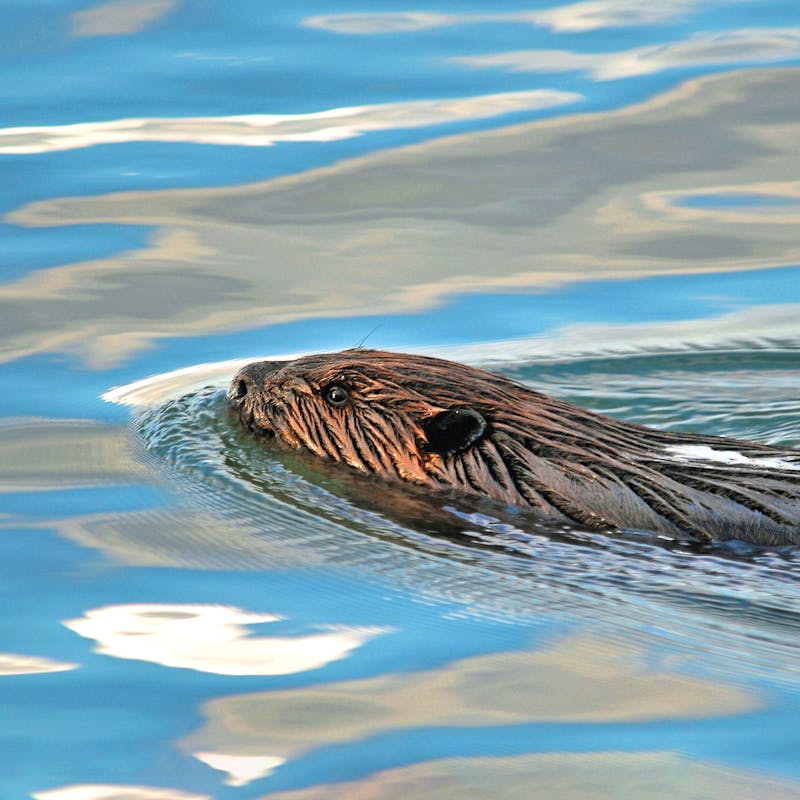Taos, New Mexico was once a vital link in the beaver fur trade, linking the streams of the Southwest to markets in St. Louis and further East. Today, however, beaver are not part of the local economy, though some landowners and other interest groups might be changing that.
Aaron recently visited Taos speaking to the Rio Fernando de Taos Revitalization Collaborative — a collective of elected officials, agencies, groups, and individuals working to bring a New Mexico river back to life — about living with beavers. Why? Because beaver are vital to healthy and resilient ecosystems. Where there are beaver, there are plenty of other native wildlife. Beaver, North America’s largest rodent, are truly an ecosystem engineer, creating wetlands, ponds, and meadows, filtering water, trapping sediment, and mediating flashy streams into more consistent flows. All they need is water, trees, and time to be busy, as the saying goes.
But this narrative is not as simple as it should be. Humans have, not surprisingly, had a huge impact on beaver. Historically there were 100–300 million beaver in North America. Beaver dams, ponds, and meadows would have been much more abundant and visible than today and would have been found on almost every stretch of every stream. Unfortunately, we decimated their populations, trapping them across the continent for the whims of fashion, with only about 100,000 individuals left at the start of the 20th century. Beaver, and all their benefits, were almost exterminated. Their populations have rebounded since, with about 15 million beaver now damming streams and doing their thing in North America, but still a far cry from their historic numbers and influence.
Fewer beavers on the landscape means a lot of things, but mostly it means fewer wetlands and habitats for other species, more boom and bust water flows, and lower water quality. There are countless studies showing us how beaver alter their world and benefit other species, including humans. For example, in the arid intermountain west, 80% of species depend on wetlands during their lives, even though wetlands cover only 2% of the landscape. With their numbers at a small fraction of historic abundance, the many benefits that beavers provide are dramatically reduced.
The Rio Fernando de Taos in northern New Mexico in the Southern Rocky Mountains is struggling and polluted. Historic uses and climate change have degraded the system. Water is warming and the life in the river is dying. There is trash, E. coli, and other stressors harming the river. Plus, Taos faces an extreme and ongoing drought. But beavers may be part of a climate solution too. Climate change is causing more precipitation to fall as rain rather than as snow, more spring flooding, and less water flow in the late summer and fall. Dams constructed by beaver can help slow early runoff by storing more water in higher elevations. Organic sediment settling in beaver ponds can help sequester carbon and the increased vegetation in these wetter ecosystems can also store more carbon.
Landowners in the Taos, NM area are realizing the potential benefit of beaver, but also know that there are possible downsides. Beaver are busy, and part of that busyness includes felling trees to use in their construction projects and as a winter food source. This also includes flooding areas which humans may or may not want to be flooded. This conflict is sometimes problematic and often results in beaver being killed and removed. Defenders’ goal is to work with interested groups, such as the Rio Fernando de Taos Revitalization Collaborative in Taos, to promote more beaver on the landscape through mitigating their impacts. Trees can be fenced, flow devices can be installed to minimize flooding, and education and outreach can help promote positive attitudes about beaver, water quality, water quantity, and habitat for other species such as fish and amphibians.
Sure, there are times that beaver come into conflict with the human-built world of tidiness and organization. They do not abide by our rules and regulations, they do not read our stormwater plans, review our landscaping designs, or give a second though about flooding a low-lying bike path. They are acting like beaver should act, modifying the environment to suit their needs, and in the process the needs of many other species. Our beaver work is a win-win, promoting the huge benefits of beaver and encouraging humans to learn to live with them!








